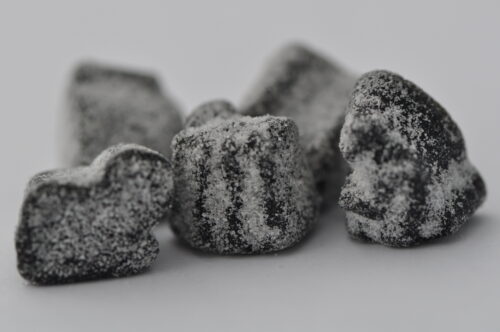Image Courtesy of Wikimedia
Sweet, sour, salty, and bitter were long believed to be the four basic human tastes. In the early twentieth century, a Japanese scientist claimed that the savory taste found in soy sauce was unique, and by 2002, “umami” was accepted as the fifth basic taste. Now, the discovery of a potential sixth taste—ammonium chloride—has brought scientists at the University of Southern California to the forefront of gastronomic research.
Detectable in Scandinavian licorice, ammonium chloride has an enigmatic quality that recalls the sharpness of sea air or an earthy brininess. The compound, found in batteries and fertilizers, changes our perception of taste by modulating the flow of hydrogen ions, or protons, through OTOP1 receptors—protein channels in our taste bud cells associated with the detection of sourness. When dissolved in water, some ammonium molecules lose a hydrogen ion to form ammonia, which diffuses into our taste bud cells and lowers the intracellular proton concentration. The difference in proton concentration across the cell membrane drives their movement through the OTOP1 receptors, affecting our perception of taste.
Researchers speculate that ammonium chloride’s distinctive flavor provided an evolutionary signal that steered ancient humans away from harmful substances. In experiments involving human cell cultures and live mice, researchers observed that mice with an intact OTOP1 receptor showed avoidance behaviors when introduced to ammonium chloride, while those without OTOP1 did not exhibit any reaction.
As gastronomes and scientists alike await further studies, this research paves the way for not only a new category of taste but also a deeper understanding of the origins behind our dietary choices.

